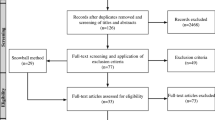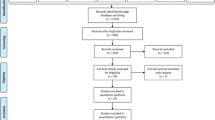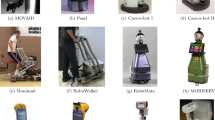Abstract
The forthcoming home environment will comprise numerous computationally enhanced artifacts that are autonomous, but interconnected via an invisible web of network-based services. The approach presented in this paper is to enable end users to make their own applications by linking such artifacts, which are treated as reusable “components.” A key requirement to achieve this is the availability of editing tools that meet the needs of different classes of users. A tool of this kind designed for end users is presented in this paper, together with the outcome of user evaluation sessions.







Similar content being viewed by others
References
Aarts E, Marzano S (eds) (2003) The new everyday: visions of ambient intelligence. 010 Publishing, Rotterdam, The Netherlands
Aarts E, Harwig H, Schuurmans M (2001) Ambient intelligence. In: Denning JP (ed) The invisible future. McGraw Hill, New York, pp 235–250
Harwig R, Emile A (2002) Ambient intelligence: invisible electronics emerging. In: Proceedings of the international interconnect technology conference (IITC 2002), San Francisco, California, June 2002
Mavrommati I, Kameas A (2003) The evolution of objects into hyper-objects: will it be mostly harmless? In: Proceedings of the 1st international conference on appliance design (1AD), Bristol, UK, 6–8 May 2003
The Disappearing Computer (DC) initiative, http://www.disappearing-computer.net/
Newman W, Sedivy J, Neuwirth CM, Edwards K, Hong JI, Izadi S, Marcelo K, Smith TF (2002) Designing for serendipity: supporting end-user configuration of ubiquitous computing environments. In: Proceedings of the conference on designing interactive systems (DIS 2002), London, UK, June 2002, ACM Press, pp 147–156
Humble J, Crabtree A, Hemmings T, Åkesson KP, Koleva B, Rodden T, Hansson P (2003) “Playing with the bits”: user-configuration of ubiquitous domestic environments. In: Proceedings of the 5th international conference on ubiquitous computing (Ubicomp 2003), Seattle, Washington, October 2003
Extrovert Gadgets (e-Gadgets) Projects, http://www.extrovert-gadgets.net
Rodden T, Benford S (2003) The evolution of buildings and implications for the design of ubiquitous domestic environments. In: Proceedings of the CHI 2003 conference on human factors in computing, Florida, USA, 5–10 April 2003
Kameas A, Bellis S, Mavrommati I, Delanay K, Colley M, Pounds Cornish A (2003) An architecture that treats everyday objects as communicating tangible components. In: Proceedings of the 1st IEEE international conference on pervasive computing and communications (PerCom 2003), Forth Worth, Texas, 23–26 March 2003
Schneider JG, Nierstrasz O (1994) Components, scripts and glue. In: Hall J, Hall P (eds) Software architectures—advances and applications. Springer, Berlin Heidelberg New York, pp 13–25
Christopoulou E, Kameas A (2004) GAS ontology: an ontology for collaboration among ubiquitous computing devices. Int J Hum Comput St (to appear in Protégé special issue)
Ringas D, Kameas A, Mavrommati I, Wason P (2002) eComP: an architecture that supports P2P networking among ubiquitous computing devices. In: Proceedings of the 2nd IEEE international conference on peer to peer computing (P2P 2002), Linköping, Sweden, 5–7 September 2002
Green TRG, Petre M (1996) Usability analysis of visual programming environments: a cognitive dimensions framework. J Vis Lang Comput 7:131–174
Mavrommati I, Kameas A, Markopoulos P (2003) Visibility and accessibility of a component-based approach for ubiquitous computing applications: the e-Gadgets case. In: Proceedings of the 10th international conference on human–computer interaction (HCI International 2003), Crete, Greece, June 2003
Acknowledgements
We would like to thank N. Drossos and J. Calemis for developing the working software of the editor.
Author information
Authors and Affiliations
Corresponding author
Rights and permissions
About this article
Cite this article
Mavrommati, I., Kameas, A. & Markopoulos, P. An editing tool that manages device associations in an in-home environment. Pers Ubiquit Comput 8, 255–263 (2004). https://doi.org/10.1007/s00779-004-0286-7
Received:
Accepted:
Published:
Issue Date:
DOI: https://doi.org/10.1007/s00779-004-0286-7




